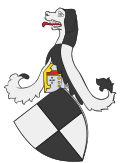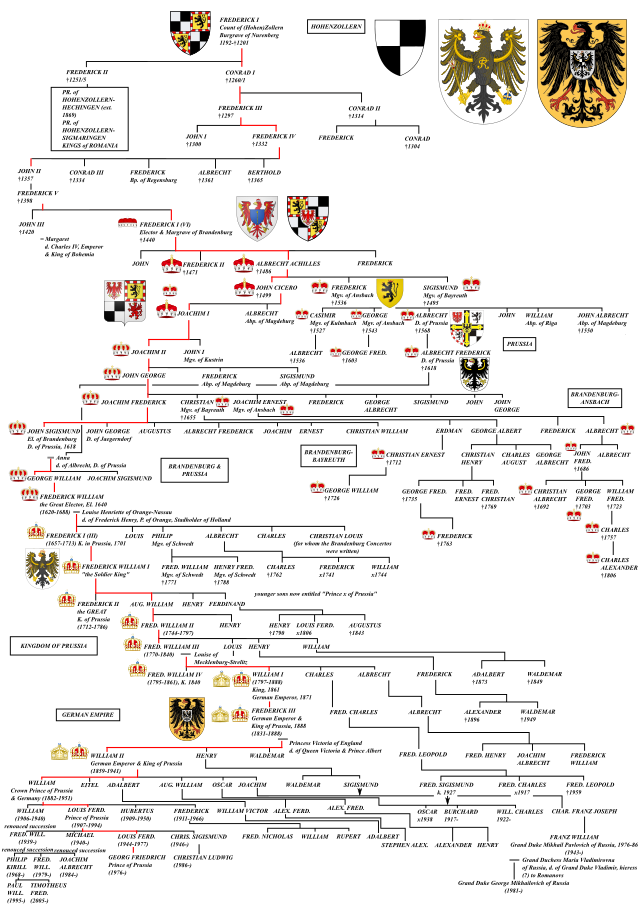German royal and imperial dynasty From Wikipedia, the free encyclopedia
The Hohenzollern family ruled various territories in and near modern Germany, and later of all Germany. The Royal House of Hohenzollern began ruling the area around Berlin and Brandenburg, now in Germany, in 1415.[1]


| House of Hohenzollern | |
|---|---|
 | |
| Parent house | Burchardinger dynasty |
| Country | Germany, Romania |
| Founded | 1100s AD |
| Founder | Burgrave Frederick I of Nuremberg |
| Current head | Germany and Prussia: HI&RH Prince Georg Friedrich (1994–) Hohenzollern-Sigmaringen: HM King Michael (1947–) |
| Final ruler | Germany and Prussia: Emperor William II (1888–1918) Romania: King Michael (1927–1930, 1940–1947) |
| Titles | Count of Zollern Margrave of Brandenburg Duke of Prussia Burgrave of Nuremberg Margrave of Bayreuth Margrave of Brandenburg-Ansbach King of Prussia German Emperor Prince of Neuchâtel King of Romania |
| Estate(s) | Germany, Prussia, Romania |
| Deposition | Germany and Prussia: 1918: German Revolution Romania: 1947: Stalinist take-over |
| Cadet branches | Hohenzollern-Hechingen Hohenzollern-Sigmaringen Hohenzollern-Haigerloch |
The family became one of the electors of the Holy Roman Emperor and then were kings of Prussia in 1702 and German emperors in 1871.
It stopped ruling after World War I, when Germany became a republic. Prussia was abolished by the four Alliea that controlled Germany in 1947.
The family took it name from its ancestral home, Hohenzollern Castle, in what is now Baden-Württemberg, Germany. The area around the castle was once ruled as a separate principality.

Seamless Wikipedia browsing. On steroids.
Every time you click a link to Wikipedia, Wiktionary or Wikiquote in your browser's search results, it will show the modern Wikiwand interface.
Wikiwand extension is a five stars, simple, with minimum permission required to keep your browsing private, safe and transparent.